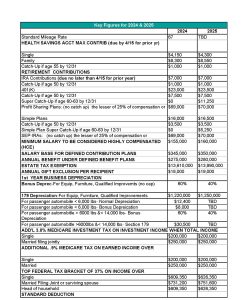Opportunity Zones
The Opportunity Zone Is the Latest Tool for Community Development
and Capital Gains Tax Deferment
For the maximum 15 percent step-up in basis,
the investment must be made by the end of 2019.
The Land of OZ (Opportunity Zones for our purposes) is not as far away as you think. The state of California has several such lands. Here’s the Wizard’s secret:
If you have proceeds from the sale of a business, sale of real estate, an inheritance, or a divorce, for instance, Opportunity Zones are a great investment. But there are ins-and-outs you should know beforehand to see if this OZ is right for you.
What is an Opportunity Zone?
From the California “opzones.ca.gov” website:
“Opportunity Zones are a new tool for community development. Established in the Tax Cuts and Jobs Act of 2017, Opportunity Zones provide tax incentives for investment in designated census tracts. California Opportunity Zones will support new investments in environmental justice, sustainability, climate change, and affordable housing.”
Opportunity Zones (sometimes shortened to OZ) offer a method by which qualified investors can stimulate economic growth and improve low-income areas while at the same time realizing deferment of capital gains taxes. Although Opportunity Zones have been around since 2018, few people know about them.
Note: The gains must be invested in eligible Opportunity Zone programs.
Generally speaking, for an area to be designated an Opportunity Zone the location will be within specific ZIP Codes and have poverty rates1 of at least 20 percent, and median family incomes less than 80 percent of median statewide family income levels. The community development program’s incentives were written to attract approximately $6.1 trillion in unrealized capital gains that would be invested in certain economically challenged areas. The goal is to stimulate economic development, and the program allows investors to defer capital gains taxes, provided those gains are invested in qualified Opportunity Zone funds.
By the Numbers—Opportunity Zones in California
As of October 2019, there are:
- 879 designated Opportunity Zones in California
- 57 counties that include at least one Opportunity Zone
- 3,000,000 Californians living in Opportunity Zones.
How can you benefit from investing in Opportunity Zone Programs?
The Opportunity Zones Program offers three potential tax benefits for investing in low-income communities through a qualified opportunity zone fund.
- A temporary deferral of capital gains reinvested in an Opportunity Zone fund. The deferred gain must be recognized on the earlier of the date on which the Opportunity Zone investment is disposed of, or December 31, 2026.
- A step-up in basis for capital gains reinvested in an Opportunity Zone fund. The basis is increased by ten percent if the investment in the opportunity fund is held by the taxpayer for at least five years and by an additional 5 percent if held for at least seven years, thereby excluding up to 15 percent of the original gain from taxation. For the maximum 15 percent step-up in basis, the investment must be made by the end of 2019.
- A permanent exclusion from taxable income of capital gains from the sale or exchange of an investment in an Opportunity Fund if the investment is held for at least ten years. This exclusion only* applies to gains accrued after an investment in an Opportunity Fund. *Note: the original gain is still taxed.
Who can invest in Opportunity Zone Programs?
The purpose of the program is to encourage investors with substantial capital gains to make investments in economically challenged areas. The aim is to stimulate economic development. The program is open to any qualified investor[1], whether retail or institutional. All US taxpayers can make deferrals by putting money in Opportunity Zone funds, including individuals, partnerships, C corporations, S corporations, trusts, REITS, estates, and other pass-through entities. For example, an investor might own a low-cost-basis stock that they would like to monetize. He or she would be a good candidate for investing in an Opportunity Zone product. All capital gains are eligible for deferral, including short-term and long-term capital gains.
How do you invest in an Opportunity Zone?
There are two main ways to invest in an Opportunity Zone: 1) an Opportunity Zone fund, or 2) via direct investment.
1) Opportunity Zone fund: A portfolio of two to twenty qualified Opportunity Zone investments. This approach could provide diversification across investment types and geographies.
2) Private real estate investment: Investments in a singular qualified Opportunity Zone projects such as for a multifamily, mixed-use real estate development venture, or for undeveloped land.
What’s the risk?
Investors certainly must research the underlying quality of the investment itself. It is also important that the Opportunity Zone investment has been appropriately categorized per Federal and State government regulations.
- Opportunity zone investments have several distinguishing characteristics.
- First, they must derive at least 50 percent of their gross income from an active trade or business located in an Opportunity Zone.
- Second, they must have at least 70 percent of their tangible assets in a qualifying Opportunity Zone property.
- Third, an Opportunity Zone property must be acquired in a taxable purchase after December 31, 2017.
- Real estate within Opportunity Zones must also pass an improvement test.
- It must be improved by 100 percent, but the criteria will now exclude land, which has made it easier to pass the improvement test.
- If a property was purchased for $10M and the land value is $6M, then the fund would only have to improve the property by $4M.
- They must also follow an asset test. An Opportunity Zone fund must hold at least 90 percent of assets in Opportunity Zones. The asset test can be satisfied if cash is designated as working capital for specific investments, as long as investments are complete within 30 months.
When should you invest?
The best time to consider such an investment might be if faced with sudden wealth such as from stock or a business sale, real estate sale, inheritance, divorce, or financial surprises. In general, any time that estate planning is undertaken, such vehicles as Opportunity Zones and other investment vehicles should be examined for possible inclusion in a well-rounded wealth management strategy session.
REMEMBER: For the maximum 15 percent step-up in basis,
the investment must be made by the end of 2019.
Timing is paramount.
Once capital gains are realized, those proceeds must be invested within 180 days into a qualifying Opportunity Zone investment or fund. Tax benefits are dependent on the length of the investment holding period and the investment date. Talk with your tax advisor and investment portfolio manager to be sure you’re following the rules, know the definitions, and are confident of the real estate, the market, the economy, and any normal precautions to take before investing. In this land of OZ, the Scarecrow, the Tin Man, and the Lion are all waiting to walk down the Yellow Brick Road with you, and like Dorothy, you may need to act boldly and quickly.
Besides a tax advantage, what other reasons are there for you to invest in Opportunity Zone funds or projects?
If you would like to align your portfolio with one or more socially responsible principles, you may find an Opportunity Zone to meet your objectives. You might be happy in knowing you have had a positive economic impact on designated communities in California that need better or more housing, potential job growth, and support for small- to medium-sized businesses.
And you will be deferring capital gains tax at the same time, which is a win-win.
Here are some projects needing investors from California’s Opportunity Zone website:
- Transformative Climate Communities
- Water and Wastewater in the Central Valley
- California High-Speed Rail
- Turning California’s Brownfields into Assets
- California’s Start Up Ecosystem
- Community Capital Partnerships
Pick one that makes you happy. Dorothy found hers: “There’s no place like home.” As a California resident helping your fellow Californians, you can have that same warm feeling.
What do you do next?
Contact LSLCPAs today to discuss how an Opportunity Zone might be just the perfect Yellow Brick Road for you to walk this year.
Find out more about California Opportunity Zone investing from this site.
***
Disclaimer:
This material is not a substitute for consultation with a legal or tax advisor and should only be used in conjunction with professional analysis.
1 For U.S. Census 2019 poverty threshold information.
[1] For the definition of a qualified investor, check with your investment advisor or CPA.




